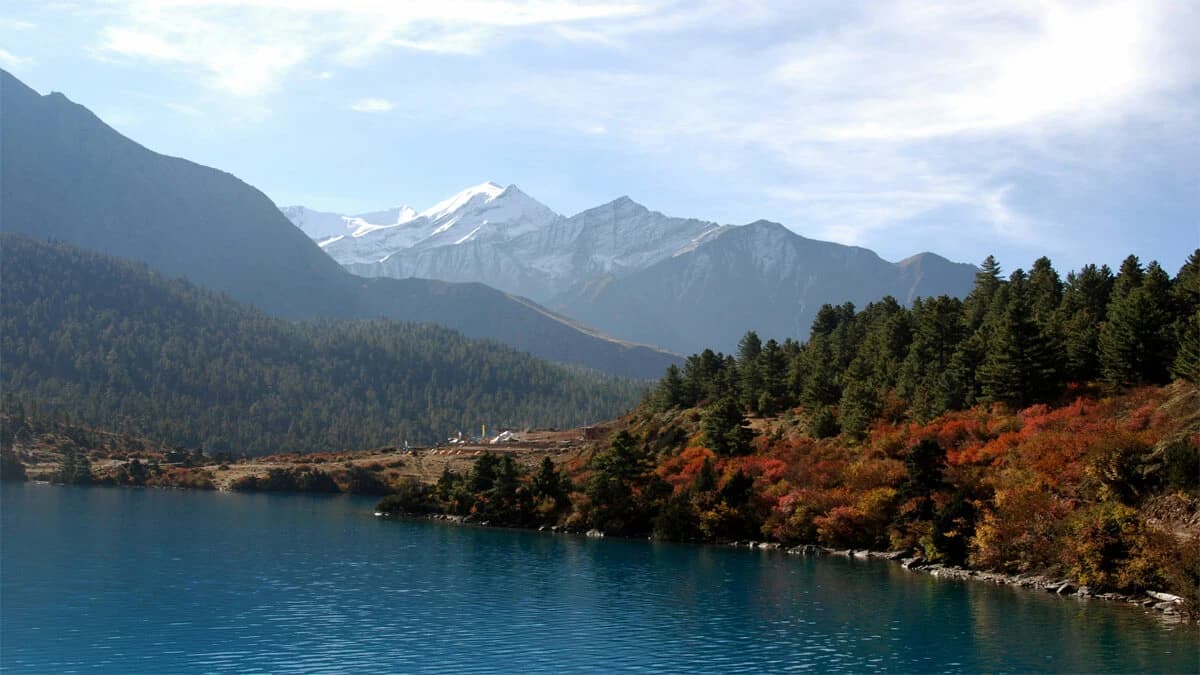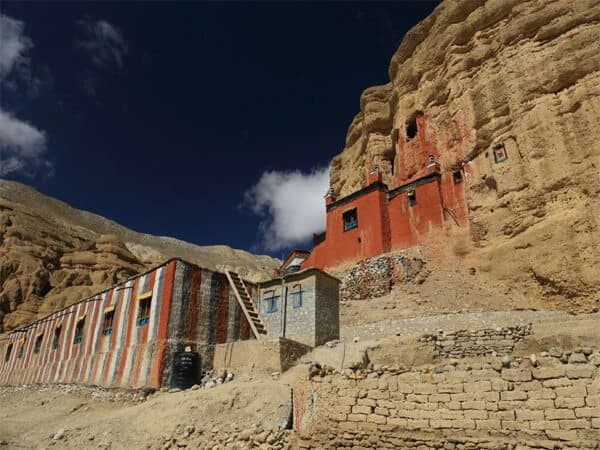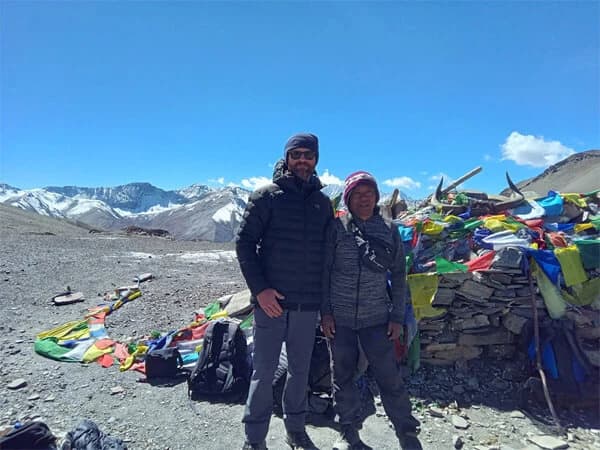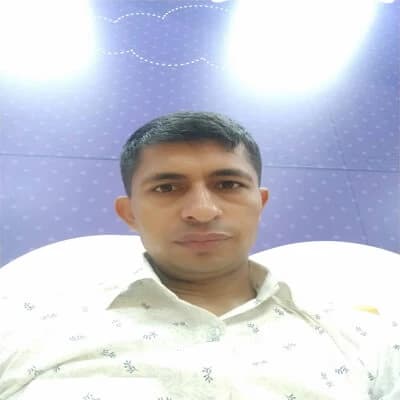The Upper Dolpo trek goes through high-altitude passes, across stunning valleys, and centuries-old Tibetan villages and monasteries. The high-altitude Tibetan villages of Upper Dolpo are in the remote northern region of the Himalayas.
At an average elevation of 4000 meters, Upper Dolpo Trek is a very challenging trek. You will have to be prepared for all kinds of weather and changing conditions. You can experience a perfect combination of culture, adventure, and wilderness from the trek. You will get a chance to explore the deepest and most remote part of Nepal.
The Upper Dolpo Trek in Nepal is a fascinating and exceptional trekking experience. It offers remote and flawless wilderness, stunning landscapes, and a chance to explore the Shey Phoksundo National Park. The region is known for its rich biodiversity and the sacred glacial Phoksundo Lake.
Upper Dolpo Trek also treks around the majestic glacial lake, Shey Phoksundo, and visits Shey Gompa, one of the most famous monasteries of Nepal. Additionally, trekkers can experience the local Tibetan culture and witness traditional ceremonies.
The trek is considered to be a challenging trek with a high difficulty level. The trek is extremely difficult during the monsoon season (June to September). The Upper Dolpo Trek is one of the most remote treks in Nepal and is only trekked by serious trekkers and adventure seekers.
The trekkers must be physically and mentally prepared. You must be prepared to endure the harsh weather conditions and high-altitude passes. You must be physically fit and well-prepared to tackle the strenuous trek.
Upper Dolpo Trek Difficulty Factors
The Upper Dolpo Trek difficulty is defined by several factors. Factors like altitude, terrain, time of year, and weather, affect the difficulty level of this trek. Similarly, your mental and physical conditions might also impact your trip. Here are some of the lists that are responsible for making the Upper Dolpo Trek difficult.
Upper Dolpo Trek Elevation
The elevation of Upper Dolpo Trek is at altitudes higher than 4,000m. There are also a couple of high passes at over 5,000m. The risk of altitude starts at elevations over 3,500m.
The Upper Dolpo trek is one of the longest and high-altitude treks in Nepal. The trek starts at the Jhupal village and reaches the highest point at Shey Phoksundo Lake, which is over 5,000 meters above sea level.
While trekking in the Himalayas, many trekkers face altitude sickness due to high elevation. The symptoms of altitude sickness include headache, nausea, vomiting, dizziness, and shortness of breath. Hence, it is essential to acclimatize properly and take it slow. If the symptoms worsen, it is better to descend to lower altitudes or seek medical attention.
Weather
Weather and temperature are the major factors in defining trek difficulty. Weather is unpredictable in the Dolpo region due to its high-altitude location. Evening and daytime temperatures can differ significantly at higher altitudes. They can even fall below the freezing temperature. You might also experience snow, rain, hail, and strong winds, which can make your journey more difficult.
With elevations ranging from 2,500m at Jhupal (where your flight lands) to 5,000m plus passes the temperatures vary widely during the standard trek period.
During the best trekking seasons (spring and autumn), the temperatures will range from around minus 10C on the high passes to around 14C at lower altitudes.
The best time to do trekking is in the spring season (March, April, and May) and in the autumn season (October, November, and December). Dolpo district is located in the north of the Himalayas and is a rain shadow destination.
During the monsoon season (June to August) because Upper Dolpo lies in a rain shadow and is a desert landscape, there is no rain. However, during this season there may be flight cancellations due to bad weather conditions.

Trekking in the winter season may be challenging, regardless of how experienced you are at snow trekking at high altitudes, the passes will be closed as well as some of the trails. We do not recommend trying to trek in this region from December till the end of February.
Terrain and Distance
The Upper Dolpo trek is one of the most extended treks in Nepal, full of rough hilly terrain with extensive lengths of uphill and downhill, narrow cliffs, crossing rivers and water streams.
The trek covers a distance of approximately 220 kilometers and takes around 18-21 days to complete. The trekking route involves several high passes, steep ascents and descents, and long stretches of rugged terrain, which can make the trek physically demanding for even the most experienced trekkers. In the trek, you have to walk a distance of 8- 12 km a day for an average of 6-7 hours a day.
From Juphal, you formally begin the Upper Dolpo trek by moving towards Dunai. However, the trail becomes more difficult as you climb higher, with steeper ascents. Even, experienced trekkers can get tired of trekking for more than three weeks. Therefore, it is important to make sure you are physically prepared for the trek before you start.
Physical Fitness
Physical fitness is the most significant part of the Upper Dolpo Trek Difficulty. The trek requires a high level of physical fitness as it includes a lot of uphill and downhill walking, and the altitude gain can be quite significant. It can be hazardous if you don’t have the energy and stamina to move on.
Your trekking starts from Juphal, and it will drain your body’s strength if you walk more than 6 hours daily. If this is your first time trekking, you might feel it is very complex, but with enough rest and acclimatization, you can continue the journey.
You must be in the best physical shape, stamina, and condition. To prepare for the trek, you should take training in cardiovascular endurance, strength, and flexibility for high altitudes.
Mental Attitude
Along with the physical challenges, the Upper Dolpo trek can be mentally demanding. The trek includes remote and isolated areas, with limited facilities and support. Trekkers will be far away from civilization and will be faced with long days of walking in rugged and isolated terrain. Your mental toughness is required, as you must be able to push through the challenges and continue moving forward.
Another mental challenge of the Upper Dolpo trek is the unpredictable weather. The weather patterns can range from warm and sunny to cold and rainy in a matter of hours.
Trekkers must be prepared for these changes and be able to adapt to the conditions. This requires a strong sense of determination and a positive attitude, as well as a willingness to embrace the challenges and uncertainties of the trek.
Physical Challenges
Some physical challenges which can make the Upper Dolpo trek difficult are as follows:
High altitude: Upper Dolpo Trek is a high-altitude trek along the Tibetan Villages in the northern region of the Himalayas. At an average altitude of 4000 meters, Upper Dolpo Trek is a very challenging trek. Trekkers should be prepared for the altitude by gradually acclimatizing themselves. It is also important to have a good level of physical fitness and endurance, as the trek involves long days of walking and carrying a heavy backpack.
Rugged terrain: The trekking route involves several high passes, steep ascents and descents, uneven paths, and long stretches of rugged terrain, which can make the trek physically demanding for even the most experienced trekkers.
Long distances: During the trek, you will have to cover a distance of 8- 12 km a day which includes walking for about an average of 6-7 hours a day. Thus, the daily trek distances could be potential for fatigue.
Weather conditions: Trekkers can expect to experience a wide range of challenging conditions and weather during the trek. You can expect extreme temperatures, unpredictable weather, and the potential for storms.
Technical Challenges
Upper Dolpo trek has some technical challenges which are mentioned below:
- River crossings: Trekkers have to go through river crossings and suspension bridges. Those can be potential risks and necessary precautions are required.
- Glacier crossings: Trekkers should be careful while going through glacier crossings as they can flood during summer and monsoon. You will need to consider safety measures and have the proper safety equipment.
- Permitted areas: To protect cultural variety and biodiversity, the government of Nepal has declared the Dolpo region as a restricted area. It is important to obtain necessary permits issued by the Department of Immigration of Nepal through a government-authorized company. Following are the costs of permits
- Upper Dolpo Trek permit – USD 500 (10 days) additional $50 per person per day
- Shey Phoksundo National Park Entry permit – USD 30 per person per entry
- Cultural sensitivity: The most interesting part of the Upper Dolpo Trek is that trekkers will witness the unique culture and lifestyle of the Dolpo people, known for their Tibetan-Buddhist heritage and traditional way of life. Hence, it is better to respect local customs and traditions.
Psychological Challenges
The psychological challenges that make the Upper Dolpo trek difficult are as follows:
- Isolation: The trekking route is remote and less populated. Due to restrictions, there are fewer travelers. Hence, there is limited human interaction and potential for loneliness
- Mental toughness: Trekkers will be far away from civilization and will deal with physical hardships through long days of walking in rugged and isolated terrain. This can be a test of mental toughness, as trekkers must be able to push through the challenges and maintain morale.
- Cultural differences: The high mountainous settlement holds people who migrated from Tibet, centuries ago. Trekkers have to adapt to a new environment and way of life.
Preparation and Equipment for Upper Dolpo Trek
Upper Dolpo Trek is an "Off the Beaten Path" trek in Nepal in the quiet, pristine, and mysterious regions of Upper Dolpo. Despite being one of the harder and longer treks with several camps above 4500 meters and several passes, the arid trans-Himalayan landscape and the daily hardships of locals leave the travelers in awe of Dolpo.
The best way to prepare for a trek is to train for it Trekkers must be prepared to face challenging weather conditions, so it is important to be well-equipped with proper trekking gear.
- Necessary equipment: Good fitness gear plays a key role in the success of any trekking trip. Trekkers must have good footwear for the trek. A pair of quality trekking shoes and hiking boots for trekking in rain or strong winds are very important. Trekkers must wear appropriate clothing for the trek. Lightweight and breathable trekking clothing is essential for trekking in Upper Dolpo. Medical supplies and a first aid kit are also essential for injuries and illness while trekking.
- Physical fitness: Being physically fit is important for a successful journey. It will help you avoid injuries, stay healthy, and have a great time trekking in Upper Dolpo. The best way to prepare for the trek is to follow a trekking training plan. Trekking requires regular physical activity and a proper diet.
- Acclimatization: Acclimatization is crucial for tackling altitude sickness in high-altitude regions. You will reach altitudes of nearly 5,000 m in the trek which can cause altitude sickness. Therefore, it is vital to take your time to acclimatize to the altitude by gradually ascending and having rest days to let your body adjust to the lower oxygen levels.
Additional Considerations

Besides physical, technical, and psychological challenges, trekkers have to consider a few factors while preparing for the adventure.Some of the additional factors are given below:
- Best time to trek: The best time to trek Upper Dolpo is in autumn from October to December. Trekkers can experience good weather, clear skies, and moderate temperatures during the fall season. The Upper Dolpo Trek is more challenging during the monsoon season (June to September).
- Group size and composition: Choosing between a solo trek and a group trek is a personal decision that depends on your preferences, experience, and comfort level. Solo trekking offers freedom and self-discovery, while group treks provide a sense of company, safety, and support.
- Solo trekkers must be prepared to navigate the trail independently. Whereas, the group trekkers have logistical support in navigating and arranging accommodations, meals, and transport.
- Local guides and porters: Guides and Porters are essential for trekking and mountaineering expeditions in Nepal. They offer valuable support and assistance to trekkers, ensuring their safety and helping them navigate through the challenging terrain of the Himalayas.
- Accommodation and food: Trekkers can stay in the basic homestay, guesthouses, or lodges if they choose to. The basic lodges and guesthouses will offer clean and comfortable rooms with an attached bathroom. Trekkers can expect to have a good variety of food at the lodges. You can have Nepali food and other Indian cuisines as well.
Conclusion: Upper Dolpo Trek Difficulty
Upper Dolpo Trek is a very challenging trek. Trekkers must be prepared for all kinds of weather and changing conditions. They must prepare to face the challenges of harsh weather conditions and high-altitude passes.
Being one of the remote treks in Nepal, it is only trekked by serious trekkers and adventure seekers. We recommend that the trekkers must be physically and mentally prepared for strenuous trek.
The best way to prepare for a trek is to train for it. Being physically fit is vital for a successful journey. It will help you avoid injuries, stay healthy, and have a great time trekking in Upper Dolpo. The best way to prepare for the trek is to follow a trekking training plan. It requires regular physical activity and a proper diet. Trekkers must be prepared to endure challenging weather conditions by being well-equipped with trekking gear. Besides physical fitness, good trekking gear plays a key role in the success of any trekking trip.










